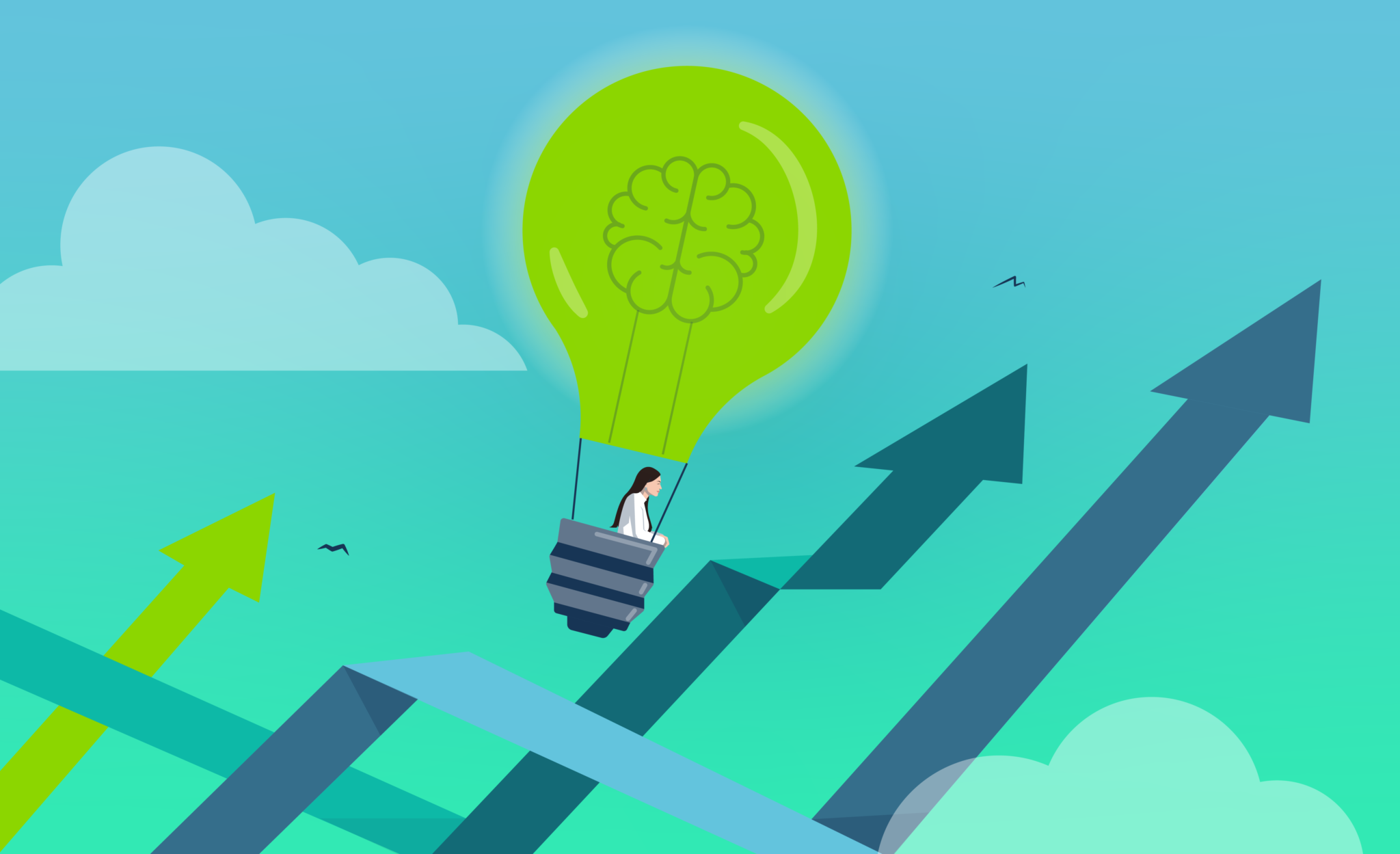 By 2030, personal jetpacks, internet-connected clothes and 3D printed livers could be everyday occurrences. Impressive, but what will the 2020s uncover for Learning and Development? Will Augmented Reality have taken over? Maybe the Amstrad CPC 464 will make a comeback?
By 2030, personal jetpacks, internet-connected clothes and 3D printed livers could be everyday occurrences. Impressive, but what will the 2020s uncover for Learning and Development? Will Augmented Reality have taken over? Maybe the Amstrad CPC 464 will make a comeback?
Join us as we delve into the exciting, exhilarating, mind-boggling world of the decade they’re all calling… ‘The 2020s…’
Firstly, Here’s a Recap of the 2010s…
To remind you how far we’ve come, here’s a rundown of what happened to L&D in the 2010s…
More Investment in Learning Strategies
When the financial crash of 2008 hit businesses, Learning and Development programmes were the first casualty. Why? L&D is like the Arts and Culture of government spending; it’s incorrectly viewed as non-essential. Thankfully, L&D saw a boom in investment on the financial upswing at the start of the decade.
Mainstream Personalised Learning
Over the past 10 years, personalisation has infiltrated the whole world! Nowadays, you can tailor anything from cardboard VR headsets to personalised cheese knives. Personalised learning has also come a long way. Our products allow you to create your own LMS with our white label option. Admins can also tailor learning by pushing and pulling their content.
The Rise of Mobile Learning

The first iPhone was released in 2007 and the world changed overnight. It took a couple of years for L&D to really catch on to these new-fangled things called ‘apps’. Suddenly, our phones could do much more than just play Snake and snap a fuzzy picture.
Now, we could run powerful learning apps that helped us train whenever we wanted. Mobile learning gave us the freedom to learn on-the-go. As of 2019, there are an estimated 500,000 learning apps available for download.
Learning Became Social
In 2009, only 24% of small businesses had a Facebook account. Fast forward to 2017, and it was 90% of businesses. L&D caught onto this revolution early and began implementing more and more social media elements into learning.
Features such as live chat, experts and clubs gave learners that social media feel that they had become accustomed to.
Online Learning
Online learning existed before the 2010s, but the migration to digital learning was the no.1 trend of the decade. From LMSs to mobile learning, everything comes under the umbrella of online learning.
So, What Do The 2020s Hold for L&D?
The Gig Economy Will Grow…
The gig economy is where the worker serves a roster of businesses. They complete one short-term contract before moving onto the next project. This gives more power and flexibility to the employee. However, there are downsides. This type of work doesn’t give the learner a lot of stability or job reassurance.
Technology will continue to allow workers to work on-the-go, and anywhere in the world with tools and gizmos that are built to handle versatility. I could even be writing this on the moon one day!
However, a side-effect of this short-term work is that training has to be quick, informative and agile; enter microlearning! Microlearning is the process of learning in short bursts in order to increase engagement and retention.
Companies now need learning products that are particularly engaging to achieve a high level of learner engagement from the offset. Dull online learning simply won’t survive the 20s (thankfully!).
The Rise of Augmented Reality
The current value of AR stands at 3.5 billion. Add to this that Augmented Reality glasses sales are estimated to reach 22.8 million by 2022, and you can see that this is far more than a trend. We’d go as far as to say that this could one day be the way we live!
How is AR going to affect Learning and Development? We predict that training will become less instructor-led, relying more on personal technology. For example, instead of formal training, a retail trainee will be able to discover detailed product knowledge simply by scanning it with an app.
Technology Will Continue to Reduce Training Costs and Increase Business Impact

At its peak in the 1950s, automotive factory Ford Dagenham employed 40,000 workers; a mammoth amount to today’s rather paulty 2000. What changed? Simply put, advances in technology meant more impact, in less time and with less manpower.
The same can be said for modern learning too. Pricey external trainers are slowly becoming a thing of the past as companies now have the tech to squeeze the most out of their internal intellectual capital with social learning tools.
This is why classroom training is likely evolve into full-time blended learning. For example, our Growth Engineering LMS includes an experts area where everyone from onboarders to long-serving veterans can find out whatever they need to.
This information can easily be stored for all to see. This builds your in-house intellectual capital and can be accessed whenever necessary!
The Rise of Skill Building
Another domino effect of advancing technology is that it’s easier to build in extra skills into your role. For instance, at the turn of the century, photo manipulation and video editing required dedicated training. Nowadays, we have the tools at hand to edit photos and videos all with ease.
An L&D professional could now cover anything from article writing, video-creating, video editing, photo-shopping, social media updates, RFPs, mail-outs, PR events and much more! What’s made this possible? Technology!
Again, social learning mechanics play a huge part in why plate-spinning a range of tasks is possible. With learning app features such as chat, we can be constantly connected, meaning obstacles can be overcome in a click.
The Fall of the Test and The Rise of Evidence-Based Learning
Tests are mean. There, we said it. Yes, they can give a vague sweep of how much training an employee has retained, but simultaneously, they don’t represent an employee fairly.
Knowledge retention (aka memory) can falter due to something as simple as a lack of sleep. When sleep deprived, emotional activity in the brain can be up to 60% higher. This is why a lack of sleep can make us grumpy, and lead to a flood of stress hormones being released. Thank goodness then that companies are beginning to wake up to this fact!
A new wave of blue-sky thinking has meant that management can now curate more tailored metrics. This can include:
-
-
Skill Attainment: What are the skills attained during employment? (Ensure to record this metric before keeping track!)
-
-
-
Workplace Application: Look out for evidence of the learner applying their skills or knowledge in the workplace.
-
-
-
Individual Behaviour Change: Have the behaviours in the workplace changed to reflect the working culture?
-
-
-
Team Behavioural Change: Is teamwork more routine? Does it render productive results?
-
-
-
Meeting Goals or Targets: The best way to track if goals or targets have been met is to record the individual/team performance every 3 months or so.
-
Final Words
By the time 2030 comes around, we can’t promise that everyone will have a jetpack, or a 3D printed liver, for that matter. However, we can pretty much guarantee a few L&D related premonitions. Training will have to adapt to the rising gig economy. Mind boggling AR will engulf the training experience, and technology will save costs on traditional training methods.
Want to know more about the future of L&D? Then download our free guide; The Future of Gamification








